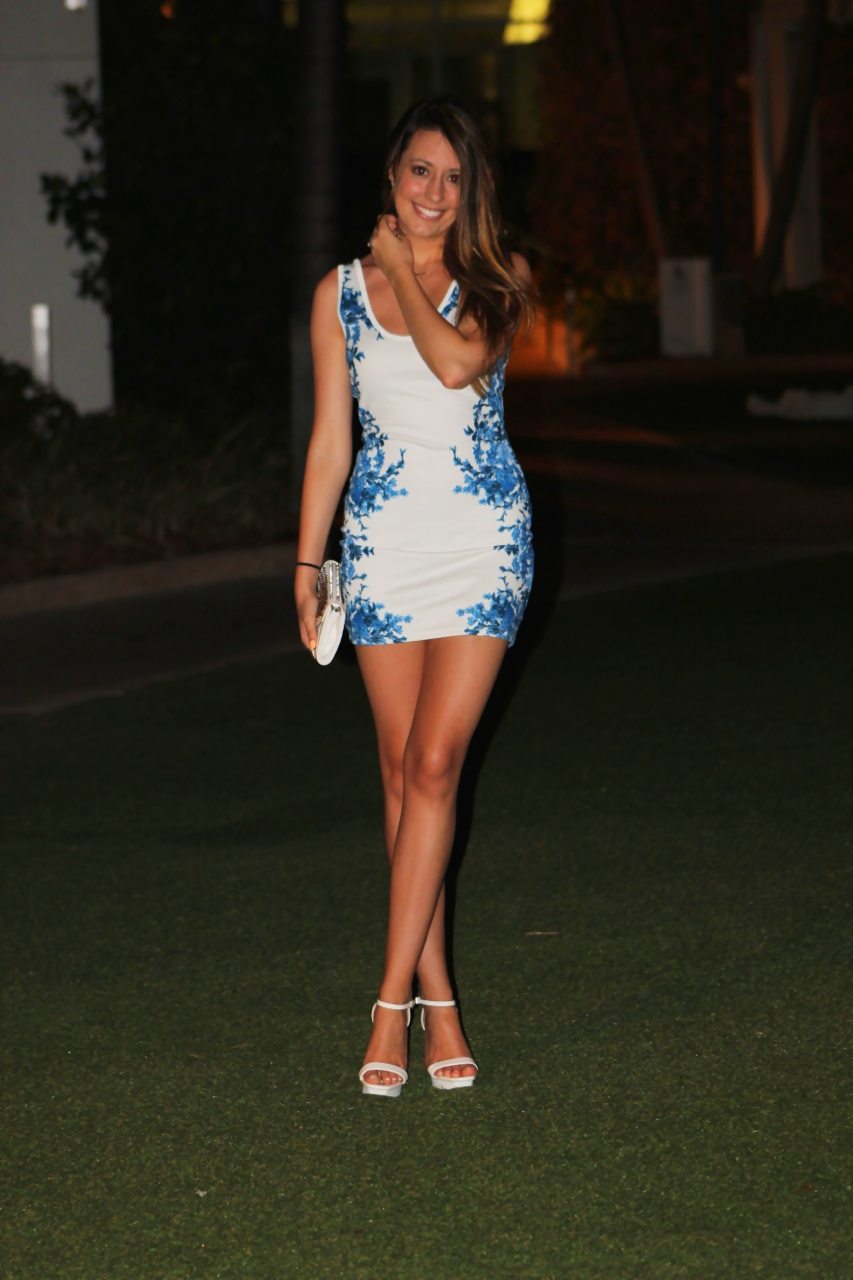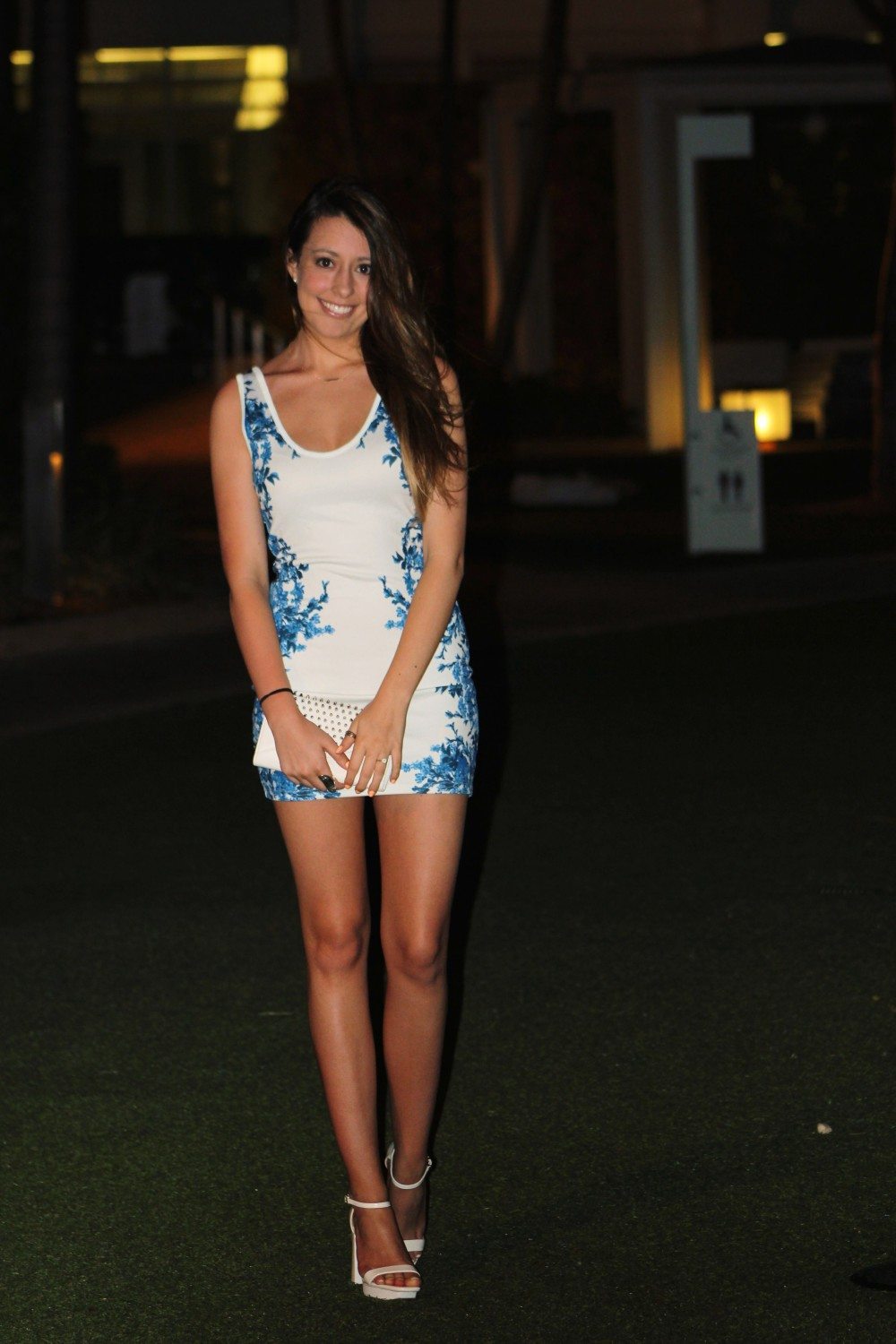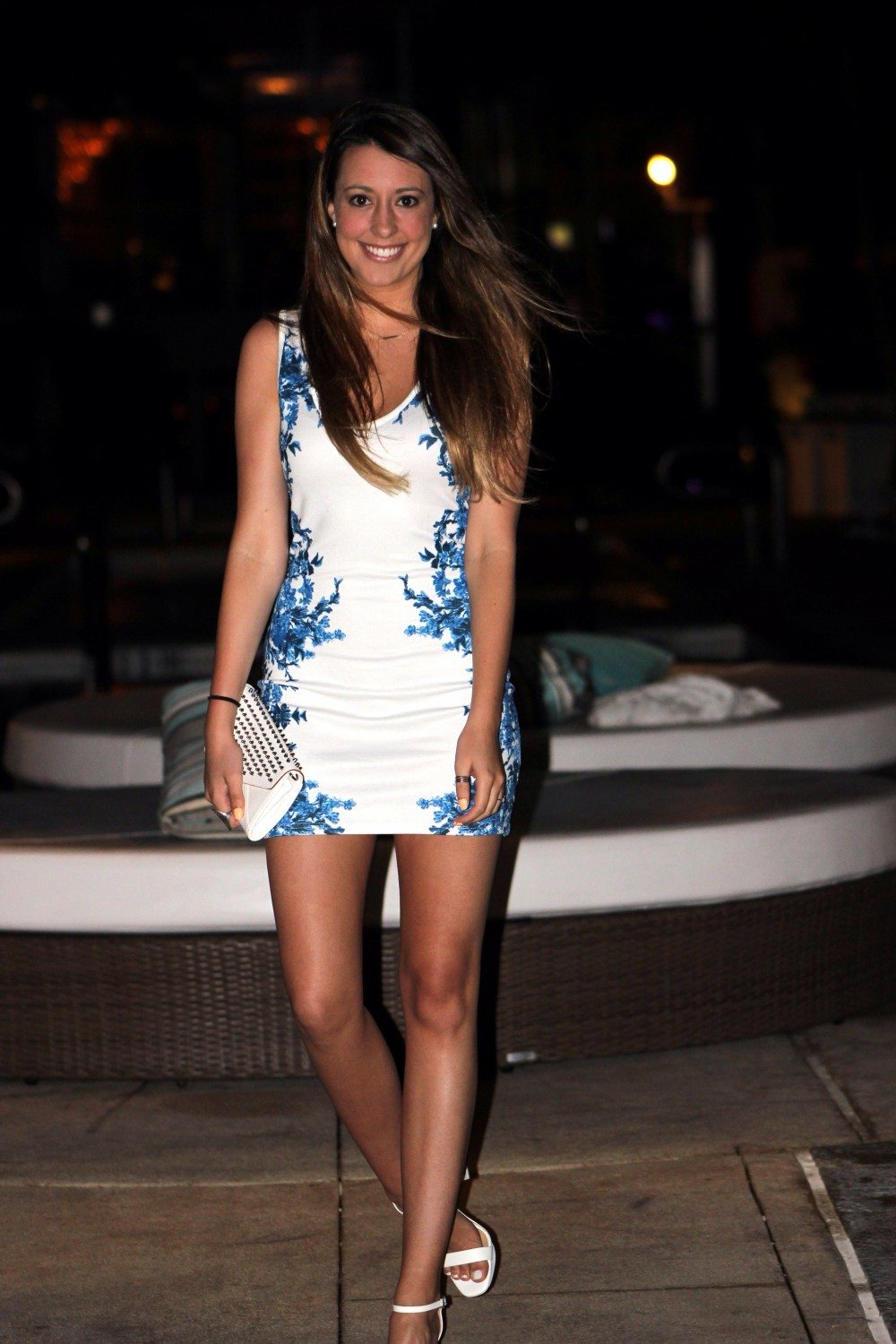I love my Savous Bluebell Flower dress! It’s perfect for going to a nice dinner and then straight out to a bar or club…plus, it’s only $36. Now that’s a steal 🙂 I wore this dress out to Hakkasan at the Fontainebleu Hotel in South Beach, Miami last night. I’m having such an amazing vacation in Miami…I don’t want to leave! I’m going to make a post with more pictures of outfits I wore this weekend soon. xx










6 Responses
Wow.. this is PRETTY! Fits you perfectly.
Xo Pam
Beautiful dress, you look wonderful!
xo
styleontheside.com
gosh i would love that dress in a maxi size the print is on point!
xo Cassandre
http://www.theworkette.com
Wow happy to have found your blog….Cute dress, gorgeous legs & beautiful smile!!
Rebecca
http://www.redtagchiclosangeles.com
Fashion may be a fashionable style or apply, especially in covering, footwear, accessories, makeup, body piercing, or furniture. Fashion is a distinctive and infrequently habitual trend within the vogue within which an individual dresses. it’s the prevailing styles in behaviour and also the newest creations of textile designers.[1] The additional technical term costume has become therefore joined to the term “fashion” that the use of the previous has been relegated to special senses like masquerade or masquerade wear, while “fashion” means that article of clothing more usually, as well as the study of it. though aspects of fashion is feminine or masculine, some trends area unit hermaphrodite. fashion yasmine Early Western travelers, whether or not to Persia, Turkey, India, or China, would ofttimes remark on the absence of modification in fashion there, and observers from these different cultures commented on the uncomely pace of Western fashion, that several felt instructed associate instability and a scarcity of order in culture. the japanese Shogun’s secretary boasted (not completely accurately) to a Spanish traveler in 1609 that Japanese article of clothing had not modified in over a thousand years.[4] however, there’s appreciable proof in ming China of rapidly dynamical fashions in Chinese wear.[5] Changes in costume often occurred sometimes of economic or social amendment, as occurred in ancient Rome and also the medieval Caliphate, but then a long amount without major changes would follow. In 8th-century Moorish European nation the musician Ziryab introduced to Córdoba subtle clothing-styles based on seasonal and daily fashions from his native national capital, modified by his own inspiration. Similar changes in fashion occurred within the 11th century in the geographic region following the arrival of the Turks United Nations agency introduced clothing styles from Central Asia and therefore the Far East.
The beginning in Europe of continual and increasingly speedy amendment in covering designs can be fairly faithfully dated. Historians, together with James Laver and Fernand Braudel, date the beginning of Western fashion in consumer goods to the center of the fourteenth century.[9][10] the foremost dramatic early modification in fashion was a sudden drastic shortening and alteration of the male over-garment from calf-length to barely covering the buttocks, generally attended with stuffing within the chest to form it look bigger. This created the distinctive Western define of a tailored top worn over leggings or trousers.
The pace of amendment accelerated considerably within the following century, and women and public toilet fashion, especially in the dressing and adorning of the hair, became equally advanced. Art historians square measure so able to use fashion with confidence and exactness thus far images, often to inside five years, particularly within the case of images from the fifteenth century. Initially, changes in fashion light-emitting diode to a fragmentation across the upper categories of Europe of what had antecedently been a really similar style of dressing and therefore the future development of distinctive national styles. These national designs remained terribly different until a counter-movement in the 17th to eighteenth centuries obligatory similar designs once more, principally originating from Ancien Régime France.[11] tho’ the made typically crystal rectifier fashion, the increasing wealth of early fashionable Europe junction rectifier to the class and even peasants following trends at a distance, but still uncomfortably close for the elites – a factor that Fernand Braudel regards joined of the most motors of fixing fashion.
In the 16th century national differences were at their most pronounced. ten sixteenth century portraits of German or Italian gentlemen could show ten entirely totally different hats. Albrecht Dürer illustrated the differences in his actual (or composite) distinction of city and Venetian fashions at the close of the 15th century (illustration, right). The “Spanish style” of the late 16th century began the move to synchronizing among u Europeans, and when a struggle in the mid-17th century, French styles resolutely took over leadership, a method completed in the 18th century.[13]
Though textile colours and patterns modified from year to year,[14] the cut of a gentleman’s coat and therefore the length of his vest, or the pattern to which a lady’s dress was cut, changed a lot of slowly. public convenience fashions were largely derived from military models, and changes during a European male silhouette were galvanized in theaters of European war where gentleman officers had opportunities to make notes of foreign designs like the “Steinkirk” neckwear or necktie.fashion The fashion industry is a product of the fashionable age. before the mid-19th century, most clothing was tailor-made. it had been overhand for people, either as home production or on order from dressmakers and tailors. By the start of the twentieth century—with the increase of recent technologies like the sewing machine, the increase of world capitalism and the development of the industrial plant system of production, and the proliferation of stores like department stores—clothing had more and more come to be mass-produced in standard sizes and sold-out at fastened costs.
Although the style business developed 1st in Europe and America, as of 2014 it is an international and extremely globalized business, with vesture typically designed in one country, manufactured in another, and sold world-wide. For example, an American fashion company might source fabric in China and have the clothes manufactured in Vietnam, finished in Italy, and shipped to a warehouse in the United States for distribution to retail outlets internationally. The fashion industry has long been one of the largest employers in the United States,[citation needed] and it remains so in the 21st century. However, U.S. employment declined considerably as production increasingly moved overseas, especially to China. Because data on the fashion industry typically are reported for national economies and expressed in terms of the industry’s many separate sectors, aggregate figures for world production of textiles and clothing are difficult to obtain. However, by any measure, the clothing industry accounts for a significant share of world economic output.
http://fashionyasmine.com/